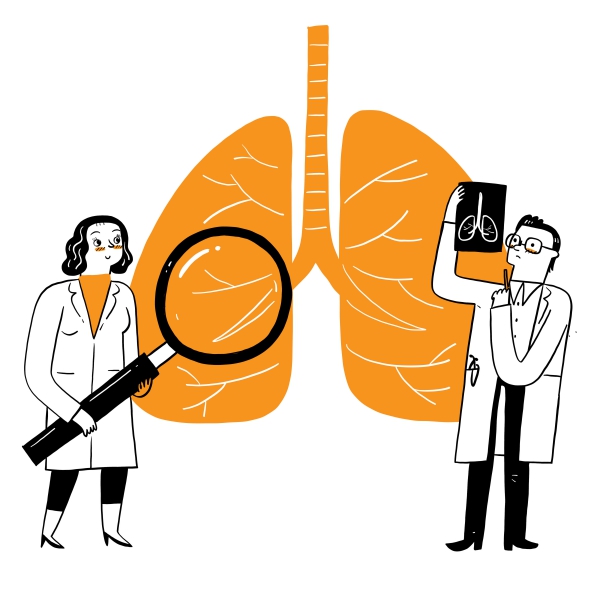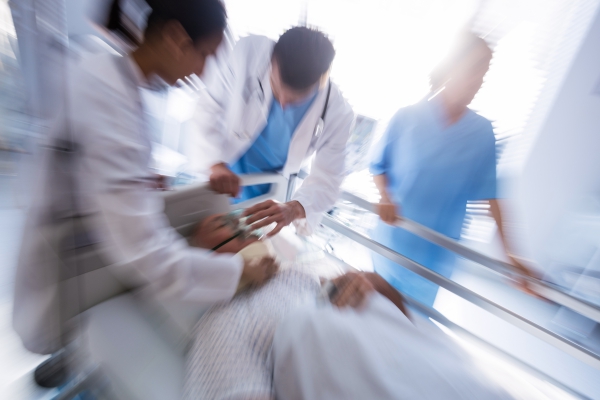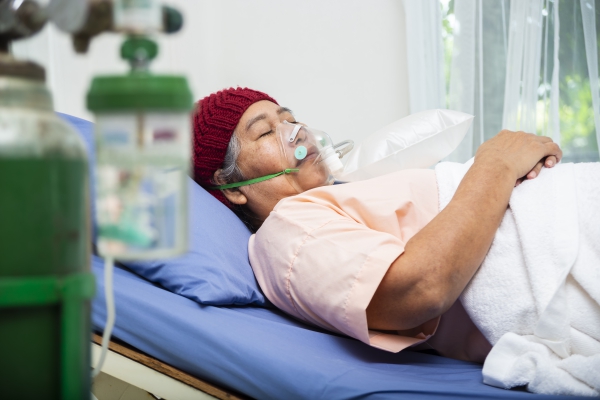What is acute respiratory distress syndrome?
Acute respiratory distress syndrome (ARDS) occurs when there is accumulation of fluids in your alveoli- these are tiny elastic air sacs which are responsible for gaseous exchange in your lungs. This accumulation of fluids will prevent the alveoli to carry out its function resulting in decreased oxygen level in your blood which will deprive your organs of oxygen.
In the United States, there is about 190,000 cases of ARDS per year and these cases are associated with 75,000 deaths. ARDS can occur at any age but is more common in people aged between 75 to 84 years.
What are the causes and risk factors for acute respiratory distress syndrome?
In a normal lung, there is a protective membrane that prevents fluids from accumulating in the alveoli. In ARDS, this protective membrane is damaged. There are several factors which may increase your risk of developing ARDS and these include:
· Sepsis: This is when your body’s response to an infection is exaggerated due to spreading of infection into your bloodstream and causes damage to your organs. This may be a life-threatening condition. In addition, sepsis is the most common cause of ARDS.
· Bacteremia: This is presence of bacteria in your bloodstream.

· Trauma: Falls or car accidents can damage your lungs leading to ARDS.
· Fractures: Fractures of long bones or multiple fractures may increase your risk of developing ARDS.
· Burns
· Pneumonia: Pneumonia is infection of your lungs.
· Drug overdose
· Pancreatitis: This is inflammation of your pancreas.
· Massive blood transfusion
· Coronavirus disease 2019 (COVID-19): People suffering from COVID-19 may develop ARDS.
What are the signs and symptoms of acute respiratory distress syndrome?
The signs and symptoms of ARDS include:
· Shortness of breath: Within hours to days, ARDS results in difficulty breathing due to decreased level of oxygen within your blood. This symptoms is more evident upon exertion.
· Increased heart rate
· Anxiety

· Increased breathing rate
· Low blood pressure
· Extreme tiredness
· Confusion
Making a diagnosis
To make a diagnosis, your doctor will take a detailed history from you to know more about your symptoms. After the history taking, your doctor will perform a physical examination to look for signs of ARDS. Your doctor may order some tests to confirm the diagnosis and these include:
· Laboratory tests: Arterial blood gas is a procedure during which your doctor take a blood sample from your arteries to determine accurately the level of oxygen in your blood. In addition, it can measure the level of carbon dioxide in your blood. Due to ARDS, the level of oxygen decreases and the level of carbon dioxide increases. When the level of carbon dioxide increases, the pH of your blood becomes acidic due to the acidic nature of carbon dioxide. Therefore, your respiratory rate increases to remove as much carbon dioxide possible, in an attempt to return the pH of your blood back to normal. A complete blood count (CBC) may be performed to determine whether there is presence of anaemia or signs of infection.

· Chest x-ray: This test can help to determine which part of the lungs and how much of fluids there is in the lungs. In addition, this test can determine whether your heart is heart enlarged.
· Computed Tomography (CT) scan: This imaging technique can detect any abnormalities within the lungs and heart.
· Echocardiography: This test is done is rule out any abnormalities within the heart.
· Bronchoscopy: Bronchoscopy is done to evaluate whether there is presence of infection of any haemorrhage within the lungs. This procedure involves your doctor inserting a tube into your mouth to reach your lungs which contains a camera at its end to have direct visualisation of the inside of your lungs.

What are the treatments of acute respiratory distress syndrome?
The treatment of ARDS involves:
· Fluid management: Fluid management has to be done very carefully as too much fluids can increase the accumulation of fluids within your lungs and to little fluids may put strain on your heart and other organs.

· Oxygen therapy: The main problem of ARDS comprising of oxygen deprivation to various organs systems, oxygen therapy provides the required oxygen necessary to maintain normal body function. Oxygen may be given through face masks, nasal cannula or through mechanical ventilation. Mechanical ventilation is achieved via the use of a machine that pushes air into your lungs and at the same time forces some fluids out of your lungs. Continuous positive airway pressure (CPAP) is the delivery of oxygen through a face mask which keeps the airways open due to its high pressure for optimum delivery of oxygen to your lungs.
· Placing the person in a prone position: A prone position means that the person is lying with his/her chest down and back up. This position has proved to significantly improve oxygen delivery to the lungs.
· Medications: Some medications may be given to treat any infection, pain, and minimize gastric reflux. In addition medications may be given to prevent formation of blood clots within the legs or lungs.
· Tracheostomy: People suffering from ARDS requiring prolonged mechanical ventilation will eventually require tracheostomy establish a more stable airway. Tracheostomy is a procedure during which an opening is created in the neck in order to place a tube into your windpipe (trachea).

What are the complications of acute respiratory distress syndrome?
If ARDS is left untreated, the following complication may ensue:
· Formation of blood clots within your veins: Lying in a hospital bed for a prolonged period of time may increase your risk of developing blood clots within your veins. A portion of this blood clot may break off to travel till your lungs to cause a pulmonary embolism which is a life-threatening condition. Pulmonary embolism occurs when a blood clot formed elsewhere gets lodged in an artery of your lungs, depriving a portion of your lung tissues from oxygen.
· Pneumothorax: A pneumothorax is also known as a collapse lung. In ARDS this may be caused due to the use of mechanical ventilation which increases pressure within your lungs. This increase in pressure may cause a puncture in your lung walls resulting in a collapsed lung.
· Infections: The use of mechanical ventilation makes it easier for germs to reach your lungs and therefore causing a lung infection.
· Pulmonary fibrosis: This condition may be defined as scarring of your lung tissues. This usually occurs within weeks of the onset of ARDS. This causes your lungs to thicken and therefore prevents your lungs to expand normally, making it more difficult for your lungs to carry its function- that is to provide your body with oxygen.

· Depression: As ARDS is a severe condition, most ARDS survivors suffer from depression.
· Breathing difficulty: Even after treatment of ARDS, some people may suffer from breathing problems and require supplemental oxygen at home for a few months.
· Muscle weakness
· Excessive tiredness
Prognosis
Unfortunately, ARDS has a mortality rate of 40-70%. However due to recent advancement in technology, this percentage has dropped to 30-40%. In addition, the mortality rate increases with age. Seeking medical advice early with help to prevent disease progression and onset of complications.

Source:
J. Alastair, I. and Simon, M., 2016. Davidson's Essentials of Medicine. 2nd ed. London: ELSEVIER.
Parveen, K. and Michael, C., 2017. Kumar & Clarks Clinical Medicine. 9th ed. The Netherlands: ELSEVIER.
Harman, E., 2020. Acute Respiratory Distress Syndrome (ARDS) Workup.
Harman, E., 2020. Acute Respiratory Distress Syndrome (ARDS) Treatment & Management.


